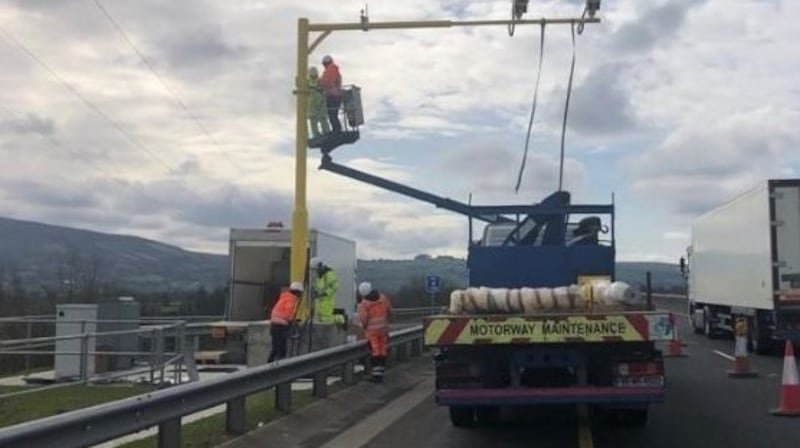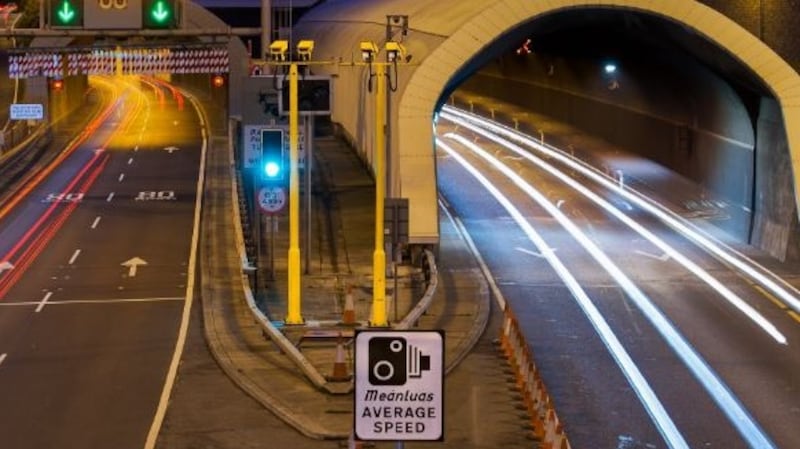Motorists who break the speed limit on motorways, but avoid getting caught by slowing down as they pass speed cameras, are to be targeted by a new “average speed” system being introduced by the Garda and road operators Transport Infrastructure Ireland (TII).
Average speed detection systems note the time a vehicle passes first one and then a second point along a motorway.
By setting the points are a defined distance apart, the system can automatically work out the average speed of the vehicle as it travels from the first point to the second.
For example, if the points, Point A and Point B are set 120 kilometres apart, the vehicle can only legally cover that distance in one hour, travelling at the maximum speed of 120kilometre per hour.
If a vehicle gets from A to B in less than one hour it must have exceeded the speed limit and the registered owner could expect to get a fine and penalty points in the post.
The average speed system is seen by road safety advocates as a better method than a single point speed camera, the location of which generally becomes known to motorists over time.

An average speed detection system was successfully introduced in the Dublin Tunnel to combat speeding in 2017. Since then the number of drivers exceeding the speed limit of 80 km/hr in the tunnel has dropped from about 55 per cent to just over 10 percent.
Now, TII and the Garda plan to introduce the “first mainline motorway” average speed system on the M7 motorway in Co Tipperary.
The system will calculate the average speed of vehicles between Junctions 26 Nenagh (west) , to Junction 27 (Birdhill). The route was chosen as a pilot project because the low-volume traffic on the road which makes it typical of an are where drivers tend to speed, according to TII .
In 2020, there were a total of 357 speeding detections made in the vicinity of Junction 26 and Junction 27. TII said this type of driver behaviour was very dangerous, and is compounded during rain or hail showers increasing the potential of serious accidents. Junction 26 to 27 are in an area noted for sudden and severe showers of hail.
TII said it had analysed speed data on the M7 corridor since 2017 and identified speeding as a significant issue with some 40 percent of drivers exceeding the 120 km/h speed limit on certain sections.
The pilot system will be deployed to cover both direction with the installation of equipment commencing on Monday. The equipment will be made especially visible to motorists and there will be a period of testing before the system goes live.

The “go-live” date for operations will be determined by An Garda Síochána with an announcement at least 10 days prior to that time. Garda Supt Tom Murphy the system would save lives and make roads safer.
Kevin O’Rourke TII Head of Network Operation at TII said there were potentially “ significant safety benefits for both the road user and our teams working on the motorways”.











